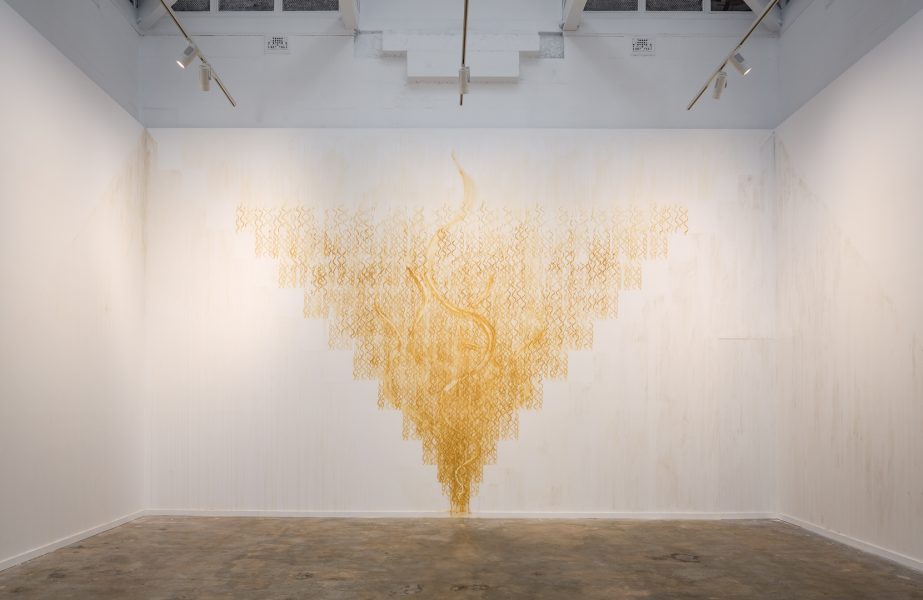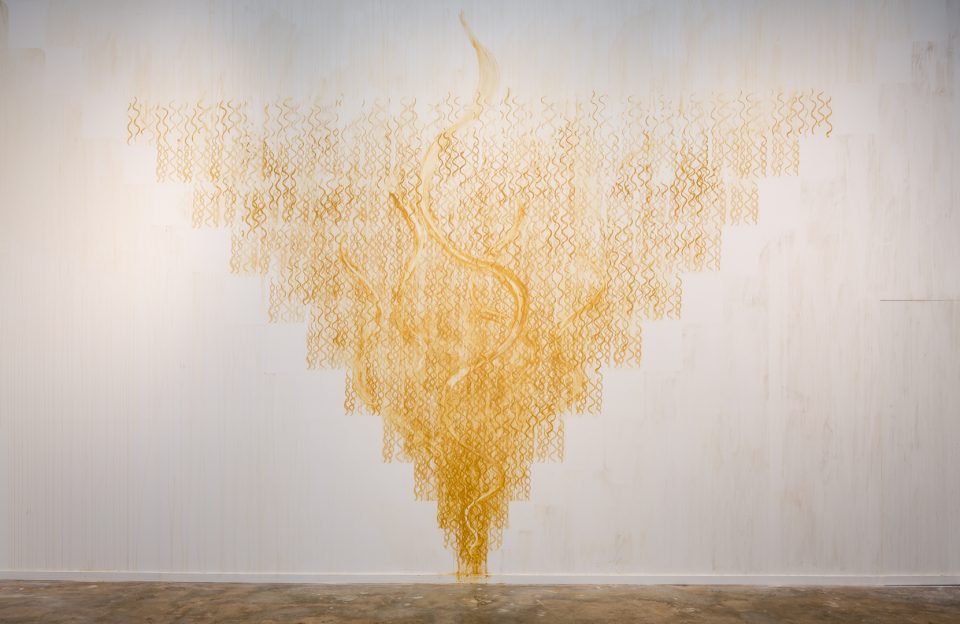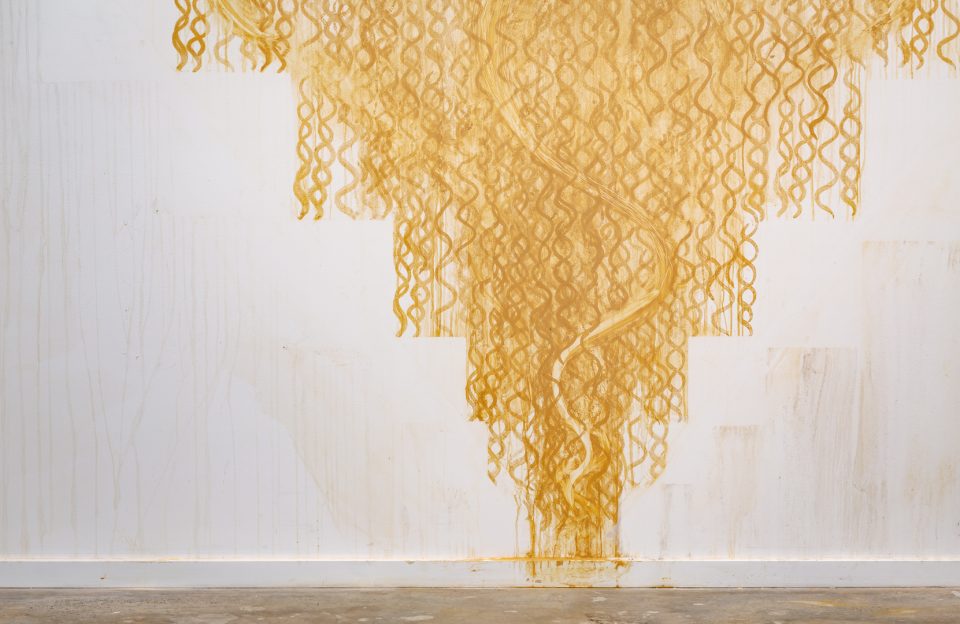Lerato le le golo (la go hloka bo kantle) / A big Love (without an outside), 2022
site-specific installation with clay from Bidjigal and Dharawal Countries
Courtesy the artist and Sfeir-Semler Gallery
Dineo Seshee Bopape works with unprocessed materials such as clay, soil, sand and water – connecting with place and history through these unmediated earthly elements. For this new commission for rivus, Bopape has sourced clay from sites on Bidjigal and Dharawal Countries – with the help and pemission of First Nations peers – that has then been screenprinted directly onto the gallery wall in a series of layers to build up the pigment.
Situated at the National Art School on the site of the infamous Darlinghurst Gaol, Bopape’s markings speak to those of convict and prisoner labour still visible on many of the sandstone blocks around the campus. Bopape’s works often explore sites of colonial violence, brutal indenture and trauma, such as former African slave routes, prompting reflection on the impact of attempted human dominance over one another and the environment.
Key to her practice though is a continual return to notions of sovereignty, home and care, respecting and listening to the language of the land and waters. This work’s title Lerato le le golo (… la go hloka bo kantle) is in the artist’s mother tongue SePedi, spoken in Limpopo, the northernmost province of South Africa. The piece here shares its title with other works by Bopape currently on view at the Secession in Vienna and in the high desert at Joshua Tree, California.
As she writes:
The multiple connections of matter, life and spirit are sung through Lerato le le golo (… la go hloka bo kantle) [a big love (… that has no outside).
The poetic line in SePedi refers to the relation between things – an unconditional love … A feeling overflowing in the smell of rain on heat-soaked African soil … Pula (Rain), precious in the land of my birth, is synonymous with life, fertility and wealth. In SePedi, it is often eulogized in songs as a comforting presence/witness, event (pula ya medupi). There is a sensuality of it oft referenced in coming-of-age ceremonies … and those celebrating land and fecundity … also in dialogue with various Indigenous stories, an expression of the fertilization of the ground by the sky via rain, and often involving the serpent of creation … something about regeneration is at play here.
Read Gorree (song): Thobela: harmonic conversions
Here is the voice of my local waterway, the Sand River in my hometown of Polokwane:



